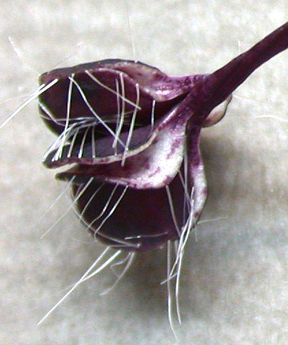 |
This plant is native to Natal, Cape Province, and Angola. It has been Known Since 1905. This is one of the easiest of all the ceropegias to grow, with only woodii and the debilis varieties being easier. It has medium thick stems, fibrous roots, and its leaves are not succulent. It will root where it touches the ground. I would suggest that you start new plants at least every two years if not every year. The previous years stems turn white and after a few years they seem less capable of supporting new growth. New roots in new soil will grow a more rewarding plant. |




